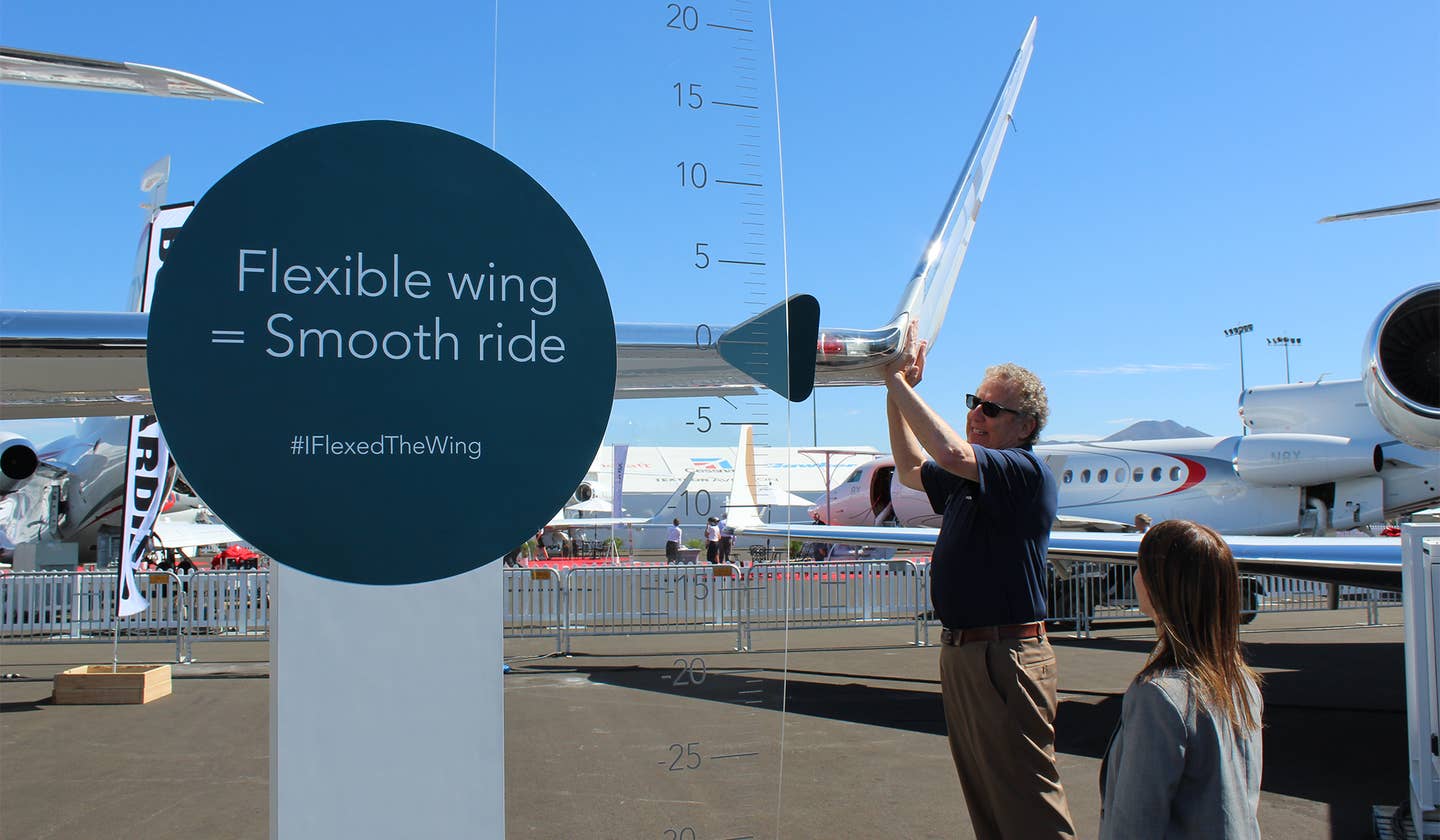
Flying‘s Rob Mark puts Bombardier’s flexible wing to the test. Rob Mark
Even aboard business airplanes, there are people who simply don't like the bumps that often accompany flying. Some passengers tell operators many of the pets flying along these days don't like the bumps either. Bombardier believes a smooth ride is an important benefit to be had in the right aircraft. The company created a small wing-ride demonstration for trade shows that they demonstrated for Flying yesterday at Las Vegas Henderson Field. The Canadian aircraft builder wanted the demo to show customers why a smooth ride aloft in the Global family of airplanes is more than a marketing slogan.
Melissa Giannangelo, a mechanical engineer by education, but now a sales engineer for Bombardier, explained how the demo came to be. “Customers told us our Global aircraft offered a really smooth flight, even in turbulence. That’s attributed to our wing design,” she said. Bombardier created a wing flexing demonstration since flex is directly tied to the ride.
Giannangelo began by detailing the importance of wing loading to the ride. Loading measures the relationship of wing size to the weight of the airplane. The smaller the wing relative to the aircraft translates into less wing area exposed to turbulence and hence a smoother ride.
“Some competitor aircraft have about 25 percent more wing area than the Global 6000, for instance,” she said. “That means more opportunity to get bounced around.”
The other important ingredient of a smooth ride is of course the flexibility of the wing. A close look at the wing root on the Global 6000/7000, reveals the chord is smaller than some competitors. "That makes the wing long and slender offering more flex. More flex is good." Giannangelo used the analogy of a car with stiff springs to make her point. The more bounce the springs absorb the smoother the ride. A stiffer wing produces a stiffer ride." The Challengers were also built with high wing loading.
The Bombardier wing flex test meant trying to actually bend the wing at the tip while a meter recorded my efforts. It was much tougher than I’d first thought it might be. All I could muster at the show was about a foot and a half of flex. “During development of the wing at Bombardier, it was flexed over seven feet, Giannangelo said.

Sign-up for newsletters & special offers!
Get the latest FLYING stories & special offers delivered directly to your inbox






